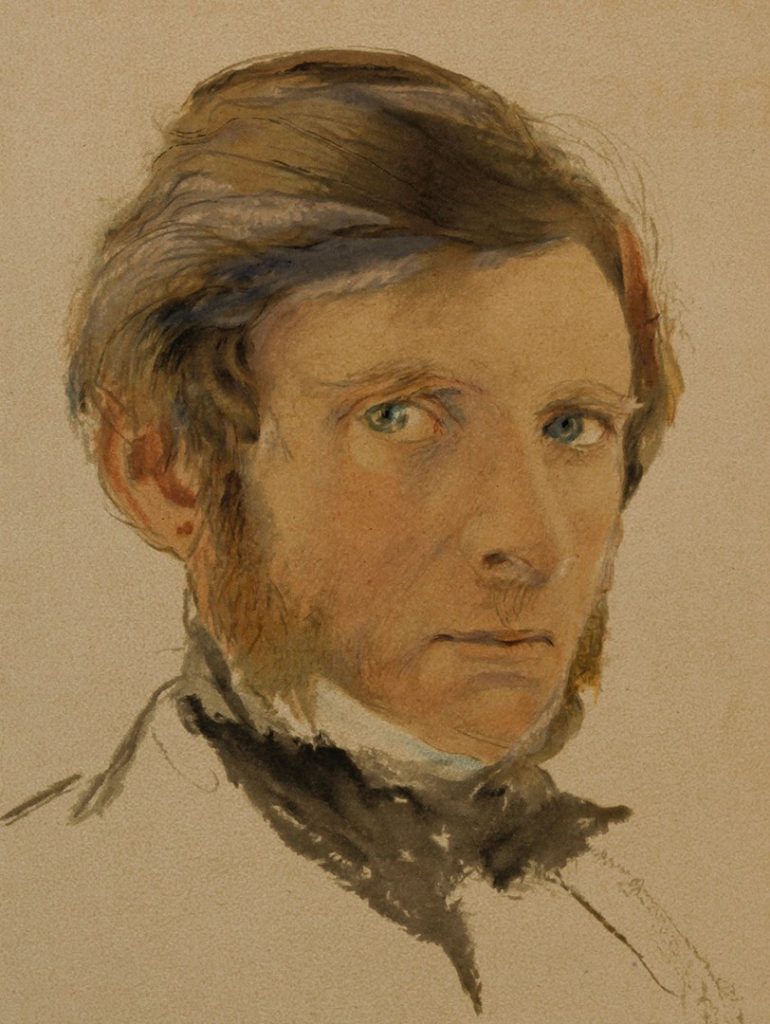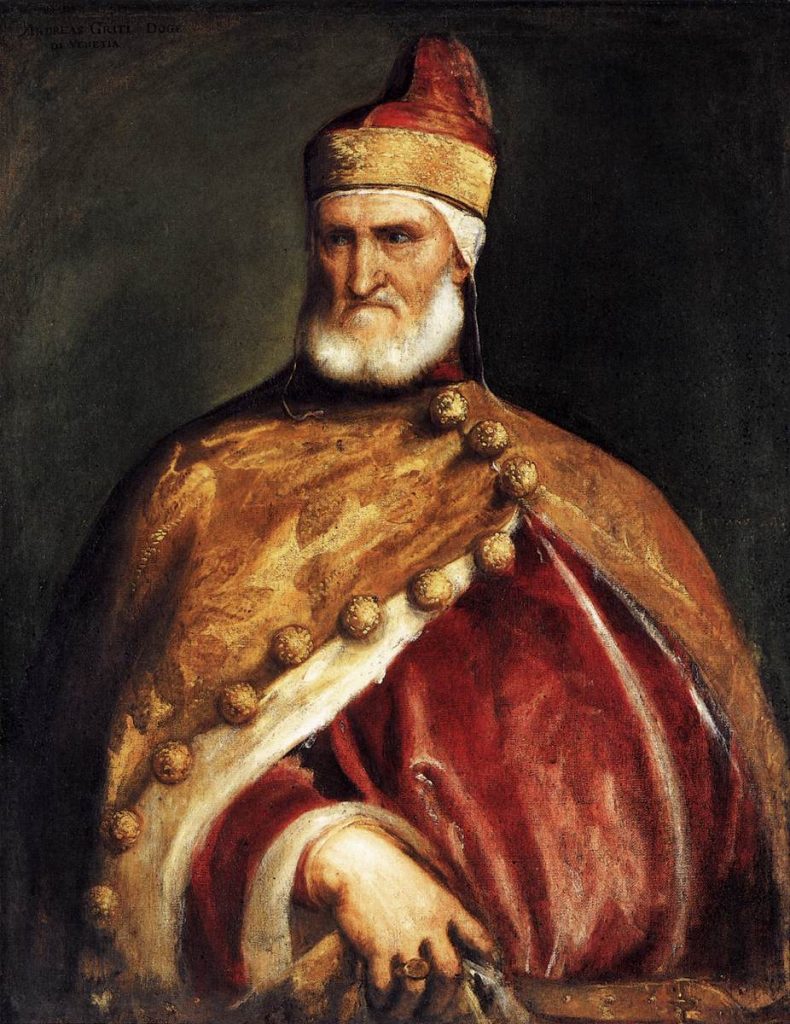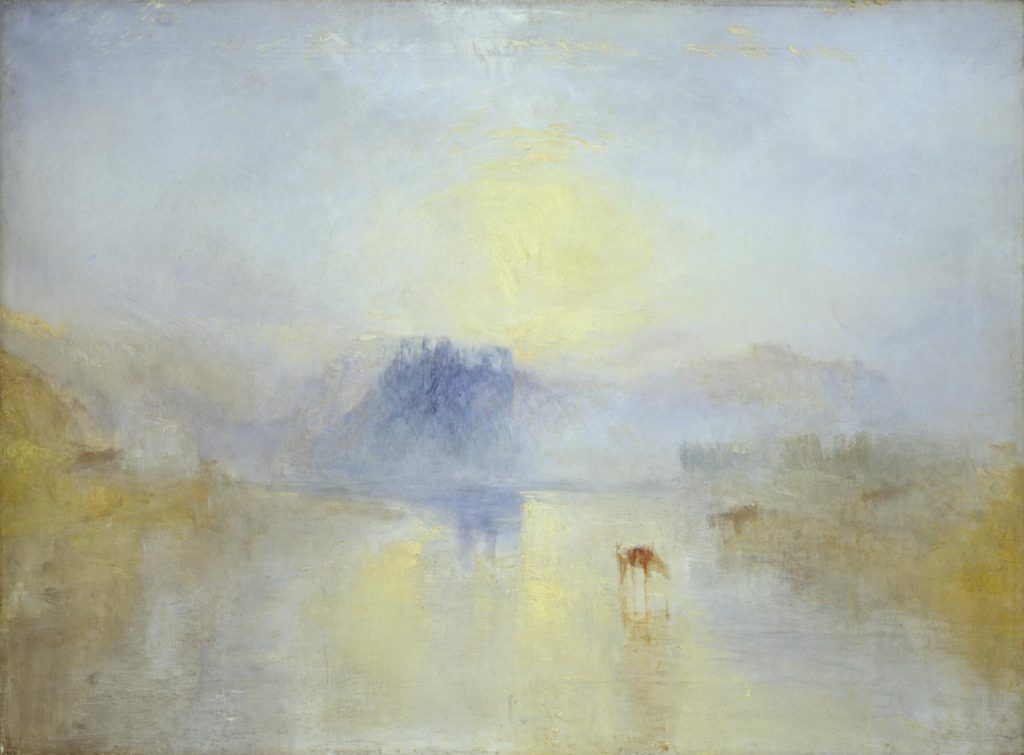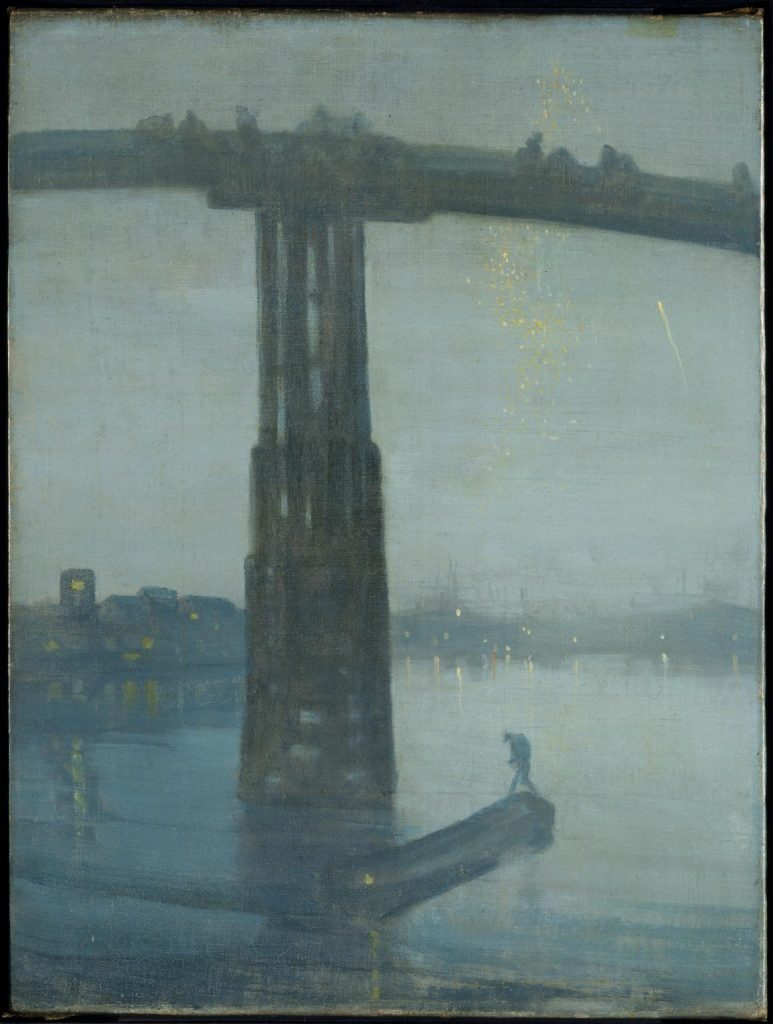James Abbott Mcneill Whistler Sued the Art Critic John Ruskin
Artist Stories
Whistler vs. Ruskin: How to Fling a Pot of Pigment and Win a Trial
half dozen May 2022 min Read
Afterwards paying a visit to the newly inaugurated Grosvenor Gallery in London, John Ruskin wrote a stinging review of the modernist exhibition. The review concerned none other than the American painter James Abbott McNeill Whistler, who sued the esteemed art critic for libel. Perhaps one of the about famous (and diverting) lawsuits in art history, it stirred a fruitful debate on the importance of art in society. The notorious trial exposed into the public eye the very ancestry of modern art as we know it today.
Summary
- Introduction to the life and works of John Ruskin and James McNeill Whistler
- The countdown exhibition at Grosvenor Gallery in London
- Whistler vs. Ruskin: ambivalent views on art
- The aftermath after the trial
John Ruskin (1819–1900) was an English fine art critic. His writings were greatly sought afterward past fine art enthusiasts all over England. Ruskin was also an academic and, reverse to popular conventionalities, an proficient of modern art. As we will later find, his love for the arts ran deep into his perception of the world, attributing value to paintings based on their key themes, intellectual propensity, and cultural importance. Anchored in the past, he was a dreamer who regarded art as a priority, high above the running machinery of industrialization which alienated the mind and soul from the dazzler of the world. Ruskin was substantially a Victorian Sage, or Prophet, whose work aimed to bring social and cultural change.

John Ruskin, watercolor self-portrait from The Works of John Ruskin, 1903-1912, the National Gallery, London, Britain. Museum's website.
On the other mitt, a witty and charismatic character, James Abbott McNeill Whistler (1835–1904) was a visionary and one of the earliest proponents of modern art, who found his inspiration in subjects of everyday life. Past associating painting with music, Whistler titled many of his paintings as 'arrangements', 'harmonies', and 'symphonies'. I of his most famous works, Organisation in Grey and Black No. 1 (1871), too known as Whistler's Mother, is a satirical portrayal of motherhood, drenched in soaking greys of puritanism. Unsurprisingly, Whistler was a leading force of the British Aesthetic movement. Their philosophy was to create 'fine art for fine art's sake', substituting aesthetic beauty for moralistic, allegorical, or sentimentalist considerations. At a time when his contemporaries were notwithstanding dabbling in the nuances of Realism and Impressionism, Whistler was crafting his distinctive mode, closely related to an early on version of Mail-Impressionism.

James McNeill Whistler, Organization in grayness: portrait of the painter, c. 1872, Detroit Institute of Arts, Detroit, MI, USA. Wikipedia Commons (public domain).
The Exhibition
In 1877, the newly inaugurated Grosvenor Gallery in London held an exhibition of modern artworks rejected by the Majestic University of Fine art. Information technology included works by John Everett Millais (1829–1896) and Edward Burne-Jones (1833–1898), a Pre-Raphaelite painter and ane of Ruskin's favorites. In dissimilarity, priced at 200 guineas, Whistler's Nocturne in Black and Gold: The Falling Rocket (1875) came as a shock to the sentimentalist critic.
Whistler painted a series of nocturnes of moonlit river scenes during the 1870s. Nocturne in Black and Gold depicts a roaring cascade of sparks falling over the melancholic nighttime sky. Bold, elusive, and enigmatic, the painting is anything but shy. It screams with joy and passion! Whistler was inspired to paint this artwork past the celebrated Cremorne Gardens about the River Thames. He used a restrictive palette of muted tones of blues, greens, and yellows. His brushstrokes are loose, rendering the contrast between light and shadow with playfulness. In the lower one-half of the painting, the figures watching the fireworks are ghost-like blotches of paint spread across the canvas. Through sparks of fire, the smoke persists in the misty air.

James McNeill Whistler, Nocturne in Blackness and Gilt: The Falling Rocket, 1875, Detroit Constitute of Arts, Detroit, MI, USA. Wikipedia Eatables (public domain).
Ruskin published his review of the exhibition in Fors Clavigera No. 79; a monthly publication written for the 'workers and laborers of United kingdom of great britain and northern ireland'. Displeased with Whistler's Nocturne, he fabricated the following remark:
For Mr. Whistler's own sake, no less than for the protection of the purchaser, Sir Coutts Lindsay ought not to take admitted works into the gallery in which the ill-educated conceit of the creative person so nearly approached the aspect of wilful imposture. I accept seen, and heard, much of Cockney impudence before now; merely never expected to hear a coxcomb enquire ii hundred guineas for flinging a pot of paint in the public's face.
Fors Clavigera No. 79
Offended by this review, Whistler sued the art critic for libel. Because Ruskin was physically and mentally unfit to participate in the trial, he asked Burne-Jones to testify on his behalf. At the trial, Whistler argued that the review had damaged his reputation and generated bad publicity for his artworks. In an attempt to justify his defamation claims, Whistler too raised incertitude about Ruskin's capacities equally an art critic, who was non a painter himself. On the other hand, the defense counsel employed a two-part strategy by dismissing Whistler's art and reinforcing the critic's right to approximate and critique works of art.
Whistler vs. Ruskin: Clashing Views
The trial called into question the quality of Whistler'southward works. Burne-Jones remarked that Whistler's paintings were incomplete. He gave the portrait of Doge Andrea Gritti (1545) by Titian as an example of remarkably well-executed art.

Titian, Doge Andrea Gritti, c. 1546–1550, National Gallery of Art, Washington DC, USA. Wikipedia Eatables (public domain).
Even so, do not accept Ruskin's harsh words as a rejection of Whistler's modernist ambitions. In Mod Painters , he praised JMW Turner (1775–1851) and his wild, bathetic depictions of nature, ofttimes found in gestural brushstrokes capturing mere studies of calorie-free and shade. No, it seems 'unfinished' meant something else to Ruskin; to him, the word was far more subtle than what had surfaced during the trial. David Chicken argues in Ruskin vs. Whistler: the Case Confronting Capitalism that Ruskin perceived Whisler's images as lacking associations with nature, literature, and civilization. In other words, Whistler'southward paintings were incomplete from a conceptual standpoint.
Call back that Whistler was part of the Artful movement. For him, art was a purely visual form of expression that should be recognized as such and nada more. He was striving to altitude himself from the very intellectual associations Ruskin favored in painting.

Joseph Mallord William Turner, Norham Castle, Sunrise, c. 1845, Tate, London, UK. Museum's website.
Here lies the main departure between Turner's and Whistler's work in Ruskin's eyes. While Turner was drawn towards painting romantic landscapes of mountains, clouds, waters, Whistler adopted more 'industrial' subjects, such as bridges. Ruskin firmly disapproved of the 'art for art's sake' initiative and criticized Whistler's works for depicting a pitiful, vulgar London. But to Whistler, the subject matter was unimportant as information technology did not affect the overall quality of the painting.
During the cross-test, the defense chaser asked Whistler if his delineation of the Battersea Bridge by moonlight in ane of his nocturnes was an authentic depiction. Whistler replied that '[he] did not intend information technology to be a 'correct' portrait of the bridge'. His nocturnes are about feeling, atmosphere, and sensations. Whistler challenges through his ingenuity the one-time ideals of beauty in art. As he put it:
My whole scheme was but to bring nigh a sure harmony of color.
The 5th in this series, Nocturne: Blue and Gold – Erstwhile Battersea Bridge is a painting of an former wooden span that spread across the Thames. Behind the bridge, Whistler added an explosion of fireworks. He was not interested in portraying a replica of his subjects. As a matter of fact, Whistler chose to paint the Battersea Span taller in the picture than in reality for compositional effects. In the altitude, you can spot the Chelsea Church and the lights of the newly-built Albert Bridge. Whistler painted his nocturnes in the studio, applying a special 'sauce' in thin layers, which substantially was a mix of pigment with copal, turpentine, and linseed oil. At the trial, the gauge genuinely asked the artist which part of the painting was the bridge in question.

James McNeill Whistler, Nocturne: Blue and Gold – Old Battersea Bridge, c. 1872–5, Tate, London, U.k.. Museum's website.
The courtroom was filled with laughter and applause generated past Whistler'due south comical and witty responses to the attorney's inquiries. In assessing Whistler's nocturnes, the defense force asked the artist if he could explain the beauty of his artworks, to which Whistler replied with a jocular metaphor: "No! Do y'all know I fright it would be as hopeless as for the musician to pour his notes into the ear of a deaf man."
A Affair of Time
Some other point of fence was the time Whistler took to paint the artwork. To the defence, it seemed that simply two days of labor for creating a painting weren't enough to justify a price of 200 guineas. Here is an extract from the trial when Ruskin's attorney asked Whistler how long it took him to 'knock-off that nocturne' (Nocturne in Blackness and Gold: The Fallen Rocket):
Whistler: …I was two days at work on it.
Attorney: Oh, 2 days! The labour of two days, and then, is that for which you ask ii hundred guineas!
Whistler: No;–I ask it for the noesis of a lifetime!
Despite all appearances, Ruskin wasn't concerned with how long it took Whistler to perfect his nocturnes. Previously, he wrote that great artworks can be done effortlessly, without much struggle. Giving birth to many ambiguities and inconsistencies, his absence in the courtroom was surely felt.
Backwash
The trial lasted only two days, and information technology was a lose-lose situation for those involved. Fifty-fifty though Whistler had claimed damages of one,000 pounds in addition to his court costs, he was awarded only a farthing, or ane-thousandth of a pound. His notorious nocturnes were rendered unsalable by the court. By the end of the trial, Whistler was bankrupt and moved to Venice to work. Things weren't far more than glamorous for Ruskin himself. He was morally defeated: his reputation suffered a great shock, and that same year, he resigned from his Slade Professorship of Fine Arts at Oxford Academy. According to him, his right to express a critical opinion about art was denied by British Police force.

Edward Linley Sambourne, An Appeal to Law, 1878, the University of Delaware Library, Newark, DE, Us. The Collector.
Ruskin wrote My Own, an article on Whistler, presently after the trial. He returned to the moral virtues in art, emphasizing that the value of a great painting is fundamentally tied to its conceptual background. Some may argue Ruskin was a socialist. He rejected the commercialization of society encouraged past laissez-faire commercialism, which polluted even the artistic genius. Ruskin believed Whistler's paintings exhibited at the Grosvenor Gallery were even so another endeavor to earn coin dishonestly. In his view, the nocturnes did not correct any social wrongs and amounted to nothing more than a concrete manifestation of the very economic system he held in antipathy. To understand Ruskin, you must see art as a ceremonious responsibility, a powerful tool used for the advancement of guild. He was amongst the first thinkers to place such great importance on the report of arts.
In 1890, 10 years after the trial, Whistler also wrote well-nigh the trial in his book, The Gentle Art of Making Enemies — a controversial collection of grievances against his former acquaintances.
Say all you want near him and his antagonistic persona simply Whistler was a visionary. He saw art as an independent field, unrelated to the rectification of social faults. Arguably, he prepare the scene for upcoming abstract artists like Jackson Pollock and Joan Miro. Whistler envisioned a different future for the fine art earth, in which artists aren't pinned down by fine art critics at every attempt to break the mold, making art for fine art'south sake!
Bibliography
i. Craven,David. Ruskin vs. Whistler: The Example confronting Backer Fine art, JSTOR. Accessed 3 Mar 2022.
2. Jones, Jonathan, "Artists v critics, round one,"The Guardian, June 26, 2003. Accessed February 26, 2022.
3. Kim, Demie, "When James Abbott McNeill Whistler Sued His Harshest Critic—and Won", Artsy, October 30, 2018. Accessed February 27, 2022.
iv. "Turner Whistler Monet: Ruskin five Whistler," Tate. Accessed Feb 28, 2022.
5. Whistler, James McNeill, The Gentle Art of Making Enemies, James McNeill, Northeastern Illinois Academy, 1890. Accessed February 26, 2022.
We love art history and writing almost it. Your support helps us to sustain DailyArt Magazine and keep it running.
DailyArt Magazine needs your support. Every contribution, however big or small-scale, is very valuable for our hereafter. Cheers to it, nosotros volition exist able to sustain and grow the Magazine. Thank you for your help!
- $v
- $10
- $25
- $50
- Monthly
Source: https://www.dailyartmagazine.com/whistler-ruskin-trial/
0 Response to "James Abbott Mcneill Whistler Sued the Art Critic John Ruskin"
Post a Comment